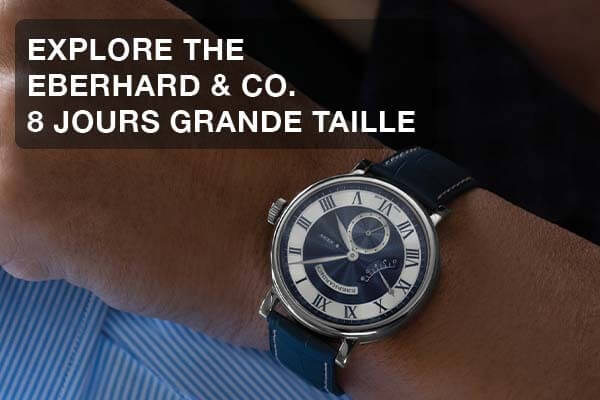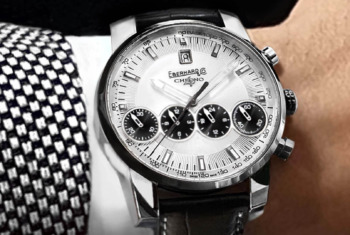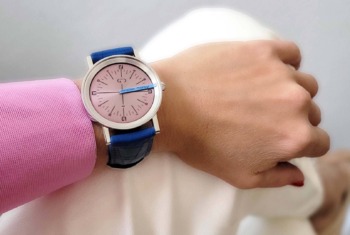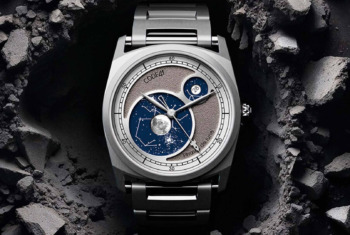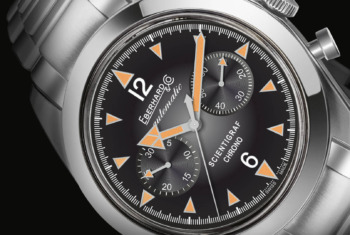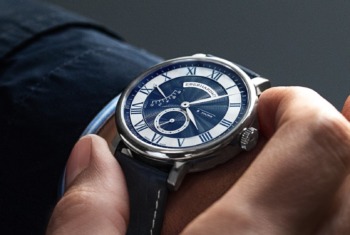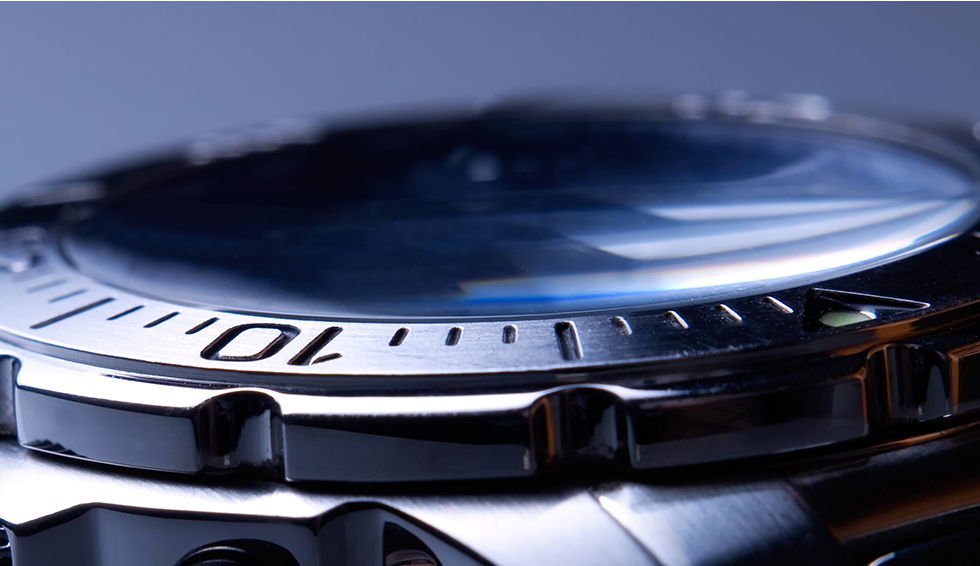
MORE THAN JUST VISUAL APPEAL
The bezel, which means “small moon” in French, is a ring that has been mounted to the face of a watch and can serve to spice things up with a sportier look. However, the bezel is something that shouldn’t be reduced solely to just its appearance. It’s a watch feature with purpose that can fulfill a range of everyday useful operations, right on your wrist. All you have to know is how to use it.
The good news is: its functionality is as simple as it is ingenious. It’s a feature that is easily understood and quickly finds acceptance from those that know to appreciate what it offers: the ability to conduct mathematical addition, subtraction, multiplication, and division calculations. Bearing this in mind, we’d like to present you with some of the different kinds of bezels and describe some of their functionality. Spend some time with us and venture onwards.
Divers’ Bezel
A divers’ bezel has a triangle at the 60 position on the minute track which is configured to the minute hand directly before a diver submerges underwater. It displays the amount of remaining dive time in minute increments. Are you wondering why exactly a bezel is necessary to “stop” the time, when there are chronographs available that make this configuration totally redundant? The reason is, that the pushers of most chronographs shouldn’t be operated underwater and the minute on the sub dial itself is difficult to read at dimly lit, lower water depths.
While early diving watch models once had bidirectional bezels, today they are only unidirectional in a counterclockwise direction. Deadly misunderstandings, confusion, and miscalculations concerning the remaining time are thus less likely because in the event of the diver misrotating the bezel, the diving time is fortunately configured for too short, rather than for too long a time.
Popular Divers’ With Unidirectional Bezels: Rolex Submariner, Omega Seamaster 300M
Time Zone Display
A bezel with a time zone display is often incorporated into watches with a GMT complication. They have a 24 hour scale and compared to diver’s’ bezels, GMT bezels are generally bidirectional. A second hour hand circumferences the dial only once per day and displays a second time zone on the bezel scale. For most modern GMT watches it’s possible when traveling out of country to set the GMT-hour hand to the local time, without ever having to stop the watch.
The second hour hand remains on the point of origin time, which is read off of the scale on the dial. It’s also possible to quickly ascertain a northern direction with the only requirement being that both watch hands must display the same time.
Popular GMT Models With Bidirectional Bezels That Configure Second Time Zones: Rolex GMT-Master II
Tachymeter scale
Many bezels have an additional tachymeter scale which displays the rate of speed on a pre-determined route (usually 1 kilometer). The scale is based on the simple, physical formula of Speed = Distance/Time. The distance that the second hand has covered, during which the predetermined route was traveled, displays the average speed during that space of time. The rate of speed in km/h can be read off of the bezel scale after a distance of one kilometer has been traversed.
The Breitling Navitimer has a bidirectional rotating bezel with scales on both its numbered rings as well as its dial borders. When both the outer and inner scales are synchronized with one another, then multiple types of calculations can be conducted e.g. currency conversion as well as deducing the average rate of speed.



